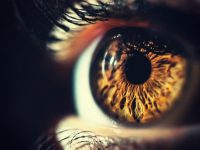Age-related macular degeneration is a common cause of vision loss in seniors. If you believe you’re at risk, here’s what you need to know about this progressive disorder.
Think for a moment what your life would be like if you couldn’t see. Most people rely more heavily on their sense of sight than they realize, and the thought of losing that sight could be devastating. Unfortunately, it is common for vision loss to occur with age and it isn’t always reversible or preventable. Age-related macular degeneration is the leading cause of vision loss in adults aged 50 and older – keep reading to learn some important facts about this disease.
What is Age-Related Macular Degeneration?
Also known as AMD, age-related macular degeneration is a progressive disorder affecting the macula in the eye. The macula is a small spot located near the center of the retina, the light-sensitive nerve tissue in the eye that is responsible for converting images into electrical impulses that your brain interprets as vision. The macula is the part of the retina that is responsible for central vision, the type used for reading and fine detail. AMD is a progressive condition which means that the damage it causes happens slowly over time – it may start with blurred vision and progress to blank spots to a significant loss of central vision. It typically doesn’t lead to total blindness.
What Are the Causes and Symptoms?
Age is the primary risk factor for AMD and it most commonly affects adults over the age of 60, though it can develop earlier. Risk factors for this condition include smoking, race, family history, and genetics. The exact cause for this condition is unknown, but two different types have been identified. Dry AMD, or non-neovascular AMD, is characterized by yellow lesions forming under the retina. Wet AMD, or neovascular AMD, is characterized by a sudden or gradual decline in visual acuity as well as the distortion of straight lines and blind spots in central vision. Other symptoms of age-related macular degeneration may include dark areas or whiteout in the center of your vision and, in rare cases, changes in your perception of color.
Treatment and Management for Age-Related Macular Degeneration
There are three stages of age-related macular degeneration with different treatment options for each stage. The first is early AMD which is typically diagnosed based on the development of mid-sized drusen, or yellow deposits, under the retina. Most people in this first stage have not yet experienced any loss of vision. The second stage is intermediate AMD and it is characterized by large drusen as well as changes to the pigment of one or both retinas. Patients in the second stage may have experience some vision loss. The third stage is late AMD and, in addition to large drusen, it is characterized by vision loss caused by damage to the macula.
Unfortunately, there are no treatments for early AMD. You may be able to prevent the disease or slow its progression, however, by living a healthy and active lifestyle free from smoking. For intermediate AMD, taking high-dose supplements of vitamin C, vitamin E, zinc oxide, coper, and beta-carotene may help to slow the progression of the disease but will not restore any loss of vision. Late AMD can be treated with injections or photodynamic therapy may help to stop further vision loss and laser surgery may be effective in correcting loss of vision.
Age-related macular degeneration is fairly common in older adults and, unfortunately, it cannot always be prevented. If you are getting older, you should be sure to get an annual eye exam to check for changes in vision and to track the progression of your condition, if you have already been diagnosed. Talk to your doctor about treatment options and think about making healthy changes to your lifestyle to prevent further loss of vision.
Photo credit: Dmytro Kozak/Bigstock










